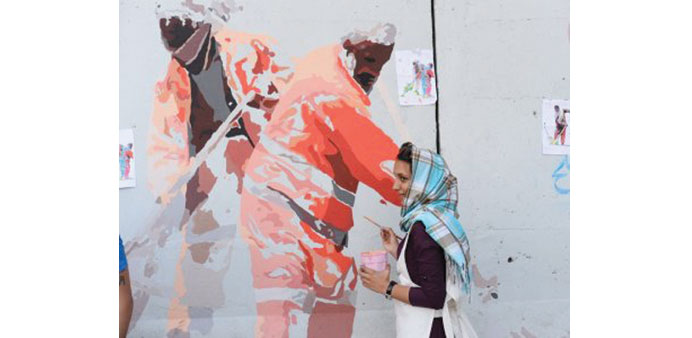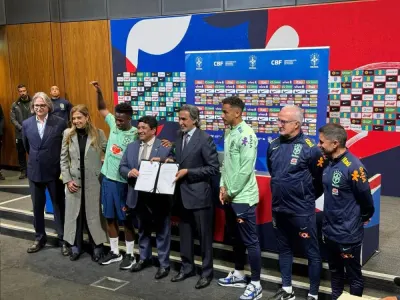So far, the self-styled “Artlords of Kabul” have painted outside the presidential palace, as well as the headquarters of the country’s spy agency.
DPA/Kabul
A mixed-bag of artists and activists are on a mission to claim their city back, by adorning the high security walls across Kabul with eye-catching graffiti images and simple messages.
The self-styled “Artlords of Kabul” spent one week to produce a colourful 4 metre by 6 metre portrait that paid tribute to the city’s street sweepers, next to a large pair of eyes in sepia chromatic colour.
“We have so many security walls in Afghanistan, especially in Kabul, which makes the whole city extremely ugly,” said Kabir Mokamel, 46, an Afghan-Australian artist and graphic designer.
“If we put images on them, it would at least beautify the city, to some extent, with some really good messages for change.”
So far, the group has painted outside the presidential palace, as well as the headquarters of the country’s spy agency.
“I want to change this ugly wall. This artwork is titled An Ordinary Hero - the hero of my city,” he said, pointing to the nearly complete image of street sweepers on a tall blast wall that protects the Afghan Central Bank building.
“We want to shift the paradigm of heroism from people with weapons to ordinary people who actually do something good,” he said, as male and female volunteers put the finishing touches to the image.
Kabul has been steadily turning into a military base. With the Taliban insurgency raging, the high concrete walls have mushroomed across the city, providing some sense of security to powerful individuals, government offices, foreign embassies and organisations.
That angers Mokamel, the driving force behind Artlords, a wordplay on the country’s infamous warlords.
“Those who are supposed to protect us are inside the wall. And we are outside the wall, without any security,” he said.
“All the upheaval that you see around is because of the people on the other side of the wall.”
Abdul Habib, a passerby, stopped at the wall to look at the mural.
“For me, there are more important people on that side of the wall. Their blood more precious than ours,” he said. “But, they are in a cage. And we are left to the mercy of the suicide bombers.”
A suicide bomber targeting Nato contractors killed 12 people, mostly Afghan civilians, on August 22.
“We want to instill a sense of visual literacy in Kabul denizens, so they can read messages through these images,” said Basir Hamidi, another graffiti artist.
Art exhibitions are rare in Afghanistan, and street art is a very new phenomenon that has relied mostly on donor money.
A boom of contemporary cultural events began around 2010, fuelled by international money.
“Within a few years, heavy metal music festivals, street art events, graffiti workshops and everything else along those lines mushroomed in Kabul with grants of hundreds of thousands of dollars,” Italian author and art critic Francesca Recchia wrote recently in a Pakistani magazine. Dozens of art-related projects, aimed mostly at educated urban youth, were funded by foreign donors. Some of those young Westernised Afghans ran around the city with spray cans.
“Their existence, however, was meteoric: their promises of radical social transformation lasted for as long as the international media coverage continued,” Recchia said.
Nothing much changed. With dwindling foreign aid in recent years, most of the early art projects have vanished.
Mokamel prides himself in self-funding his project.
“This is not a $10,000 project. It’s hardly $400, and we raised it from among our friends and well-wishers.
“I want to tell to the international community that we can do this campaign by ourselves, seriously. We just need their moral support, not their money anymore.”
Another message the artists want to convey is anti-corruption.
The large pair of eyes denotes a watchful gaze. The slogan, in both the Dari and Pashto languages, reads: “Corruption cannot be hidden from God or from the people.”
Afghanistan is one of the most corrupt countries in the world, according to Transparency International. Foreign donors spent hundreds of millions of dollars on anti-corruption campaigns over the last 14 years in Afghanistan, but the corruption seems worse than ever.
Activist Omaid Sharifi is painting walls with richly coloured murals addressing what he views as the ills of society that have emerged since the current war began.
“Corruption is a major concern for this country. It’s a shame we are going outside and begging for foreign aid, but graft and profiteering happens here in our country. We have to tackle this,” Sharifi said.
“We are using art in a strategic way to deliver our messages. I want the eyes to say: ‘I see you,’ ‘I know you are corrupt,’ and ‘I know you are stealing my money,” he said.
“This is the least I can do. If I had more resources, I might name and shame you.”



